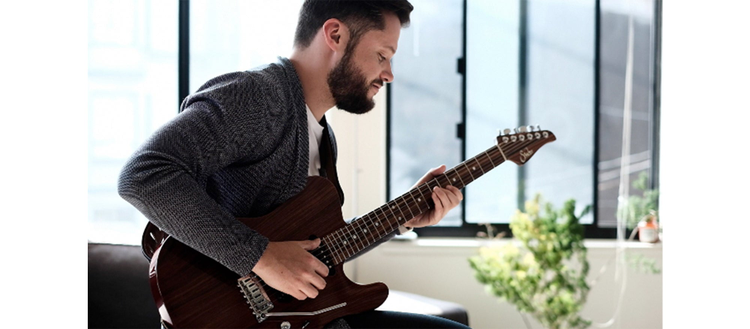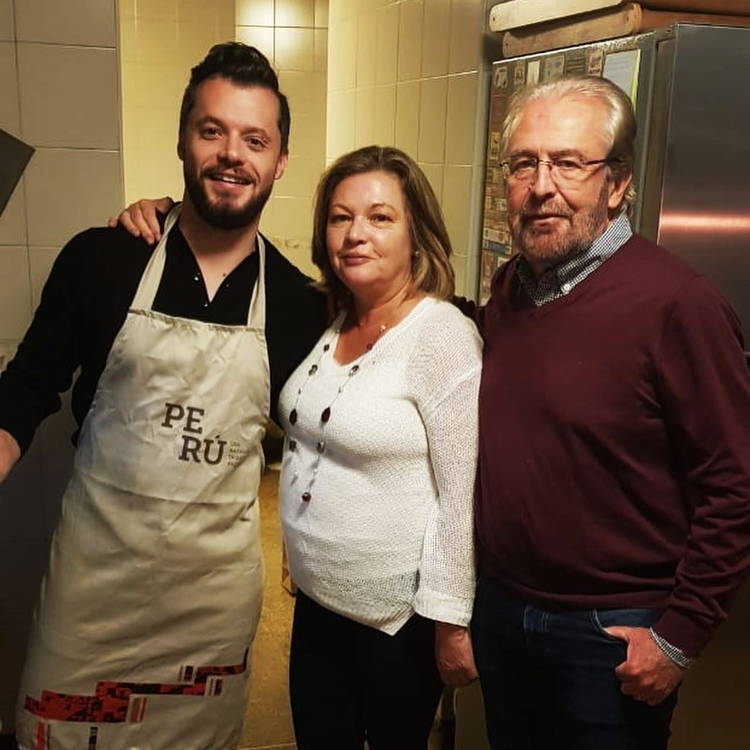A love song for Hispanic Heritage Month

Hispanic Heritage Month, which spans September 15 to October 15, recognizes the contributions and cultures of Hispanic and Latinx Americans. The observance began in 1968 as Hispanic Heritage Week and expanded in 1988 to a full month of festivities.
The unconventional mid-month timing is significant because of when several Latin American countries celebrate their independence from Spain. September 5th marks independence anniversaries for Costa Rica, El Salvador, Guatemala, Honduras, and Nicaragua, while Mexico and Chile celebrate their independence days on September 16th and 18th, respectively. Falling on October 12th, the month also includes Indigenous Peoples Day and Día de la Raza.
In honor of this monthlong celebration, we talked to Adobe employee Santiago Pombo about his love of bolero — a uniquely Latin American style of music — as well as the importance of Hispanic/Latinx culture worldwide, and how COVID has impacted the community
What is your background, and how has it influenced you?
I was born and raised in Bogotá, Colombia. I attended a French school there, so I actually grew up speaking and reading French. My parents work in government, and when I was 17, we moved to Washington, D.C. After that, I moved to Montreal, Quebec, to attend McGill University and lived there for eight years. I then joined a startup and ended up moving back to the U.S., to San Francisco, which is where I live now.
I’m a big believer in embracing a country’s customs when they welcome you, but without sacrificing your own values and heritage. I try to borrow the best elements from each culture I’ve experienced. I like to say I’m born and bred Colombian, educated French, and American by choice.
How has your Hispanic heritage influenced you?
Three things from my Hispanic heritage are integral to my identity. First, the importance of family and community; it’s a central part of life in Latin America, and it’s especially important as an immigrant.
Second, a focus on truly enjoying living; work to live, not the other way around. In Colombia, there is a celebration every day somewhere in the country! Anytime I’m unhappy, I think back to that joy and love of the essential things.
Lastly, the work ethic, “Si, se puede” (translated to, “Yes, we can” in English) is a sentiment that resonates with many Latin Americans. Nothing is too big. There’s always a way.

How did you get started playing guitar?
I started when I was 14 or 15 on my own, without lessons or anything. When we moved to Washington D.C., it was the middle of summer — we arrived on July 4, of all days — so there was no school, and I didn’t know anybody. Those first two months, I really got into playing, and the guitar became a kind of companion.
After school started, somebody found out I played and invited me to join their band. After that, I was a guitar player going forward. I’ve now been playing half of my life. It’s an incredible outlet for creativity, but also a little bit of self-therapy. Anytime I’m sad or need to think something through, I’ll pick up my guitar. I’m especially into a genre of music called bolero.
What is bolero?
Boleros are the quintessential romantic ballads of Latin America. They combine jazz harmony with Latin grooves while retaining a pop structure and aesthetic. The songs are sophisticated enough to be musically interesting, but accessible so everyone can enjoy them.
The genre originated in Cuba, but it’s popular everywhere in Latin America — around the world, really. The most prolific bolero artist was Álvaro Carrillo, who wrote over 300 songs, but many musicians have covered boleros, especially when just starting out because the songs are so well-known and loved. I’ve even recorded a version of Álvaro Carrillo’s most famous bolero, “Sabor a Mí.”
Why do you feel a connection to bolero?
There’s something incredibly Latin American about it. The identity of the people is engraved in it. It’s cheesy and a little bit over the top, but there’s a lot of passion, and it’s such beautiful music.
My grandmother actually introduced me to many of the songs. She passed away this past year from COVID. I couldn’t attend her funeral in Colombia because of travel restrictions, so I made a video of one of her favorite songs, called “Los Aretes Que Le Faltan a la Luna,” which was written by Cuban songwriter Vicentico Valdés.
Playing boleros is an avenue for me to keep in touch with my culture, even when I don’t live in Latin America.
Losing your grandmother to COVID-19 must have been incredibly difficult. How has the pandemic impacted the Hispanic/Latinx community?
Research shows Latinos and Hispanics in the U.S. are 1.7 times more likely to contract COVID-19, four times as likely to need hospitalization, and almost three times as likely to die.
There is a disproportionate impact on Latinx front-line workers in factory, labor, or service jobs. Many are informal workers, so they don’t have health insurance, and some are undocumented immigrants, so they might avoid treatment or vaccination out of fear their status will be checked.
It’s a reminder of the economic inequality and how far we still have to go.
As we celebrate Hispanic Heritage Month, what are ways people can appreciate Hispanic/Latinx culture and support the community?
Latin American culture has never enjoyed more popularity globally — Korean pop bands are even covering boleros, for example. Reggaetón and Urbano are huge in the music industry right now. Major studios are releasing movies like In the Heights and Encanto. There’s more awareness of Latin American culture than ever before. I encourage everyone to appreciate the musical influence, watch the movies, and read our stories to better understand the culture.
As a society, we need to do more to protect our Hispanic/Latinx communities and provide them equal opportunity. Take the time to be informed on proposed legislation and recognize the contributions the community continues to make to our society.